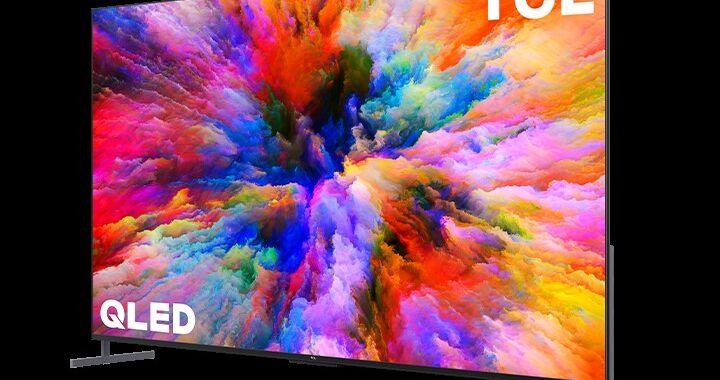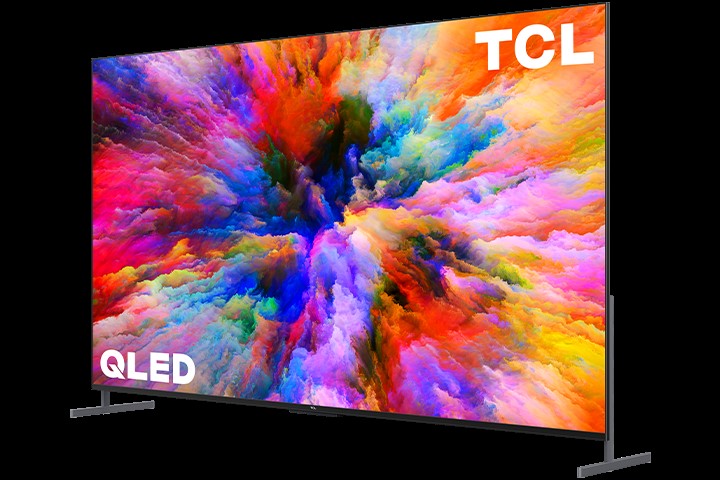

TCL does not give up the QLED dream. TCL still hopes to sell LCD-LED TVs with quantum dots, but also to introduce QLEDs in its lineup. Several companies announced new OLED TVs during CES 2023 last week, with some using state-of-the-art technology. However, TCL has claimed plans to be one of the last TV makers still resisting OLED – despite what you may have heard.
During CES, TCL announced that it was making its first OLED TV. It even committed to Samsung Display’s QD-OLED panels, which would make it the third company to sell QD-OLED TVs after Samsung and Sony. The announcement claimed that Mini LED and QD-OLED would “hold premium positions in TCL’s 2023 TV lineup”. However, the TV maker known for low-end and mid-range products said FlatPanelsHD today this is false.
“A line in the TCL CES 2023 press release confirming plans to launch the brand’s first QD-OLED television this year was incorrectly included,” TCL told the publication.
TCL added that it is “focused” on the Mini LED this year. At CES, TCL didn’t announce any specific OLED TVs, but it did showcase new Mini LEDs like the 98-inch QM8, a 4K TV with over 2,300 local dimming zones. In TCL’s press release for CES 2023, Chris Hamdorf, Senior Vice President of TCL North America, said the company is looking to manufacture larger screen sizes with Mini LED and QLED technology this year.
TCL claims to have sold more than 25 million TVs in the past four years, all without the most expensive, modern, premium option available to consumers. LG and Samsung rivals Philips, Sharp and Vizio sell OLED options. Amazon Brand TVs haven’t started to include OLED yet, but considering Amazon only started selling TVs in 2021 and their budget focus, that’s not all that surprising. Even last week’s announcement Roku Brand TVs included mention of an OLED reference design for TV partners.
It’s interesting, though, that TCL names the technology QD-OLED specifically if it has no plans to jump into the OLED scene right now. It’s reasonable to suspect that TCL plans to release an OLED TV eventually, but can no longer commit to a release this year for some reason.
TCL and Samsung also have a history; they formed the QLED Alliance, along with Hisense, in 2017. Far from being formidable, the short-lived team has done little to stand out, despite asserting a commitment to elevating QLED TVs over rival OLEDs. With Hisense starting selling OLED TVs just a year later, it has had little impact.
Samsung took longer, but it started selling OLED TVs for the first time in a decade last year, thanks to the advent of the Samsung Display. QD-OLED. QD-OLED uses a color filter with quantum dots and a blue light source to claim a wider range of colors. Traditional OLED screens, on the other hand, use yellow and blue to create a white light source that passes through a red, green, blue, and sometimes white subpixel filter.
2023 OLED and QD-OLED TVs should include brighter options, with the biggest impact expected to come from highlights. But it looks like TCL will continue to buck the growing OLED trend, targeting Mini LED as its premium technology, which has the advantages of being brighter and typically more affordable.
However, it will be difficult for TCL to avoid OLED in the long run. Last year, analyst Omdia foreseen that sales of QLED TVs would decline for the first time in 2022 and by 3.1%. The analyst expects OLED TVs to represent 12.7% of the market and go from 35.7% of the premium market to 42.1%. QLED, for its part, was forecast to go from 39% of the premium market to 37.8%.

Comments
Post a Comment